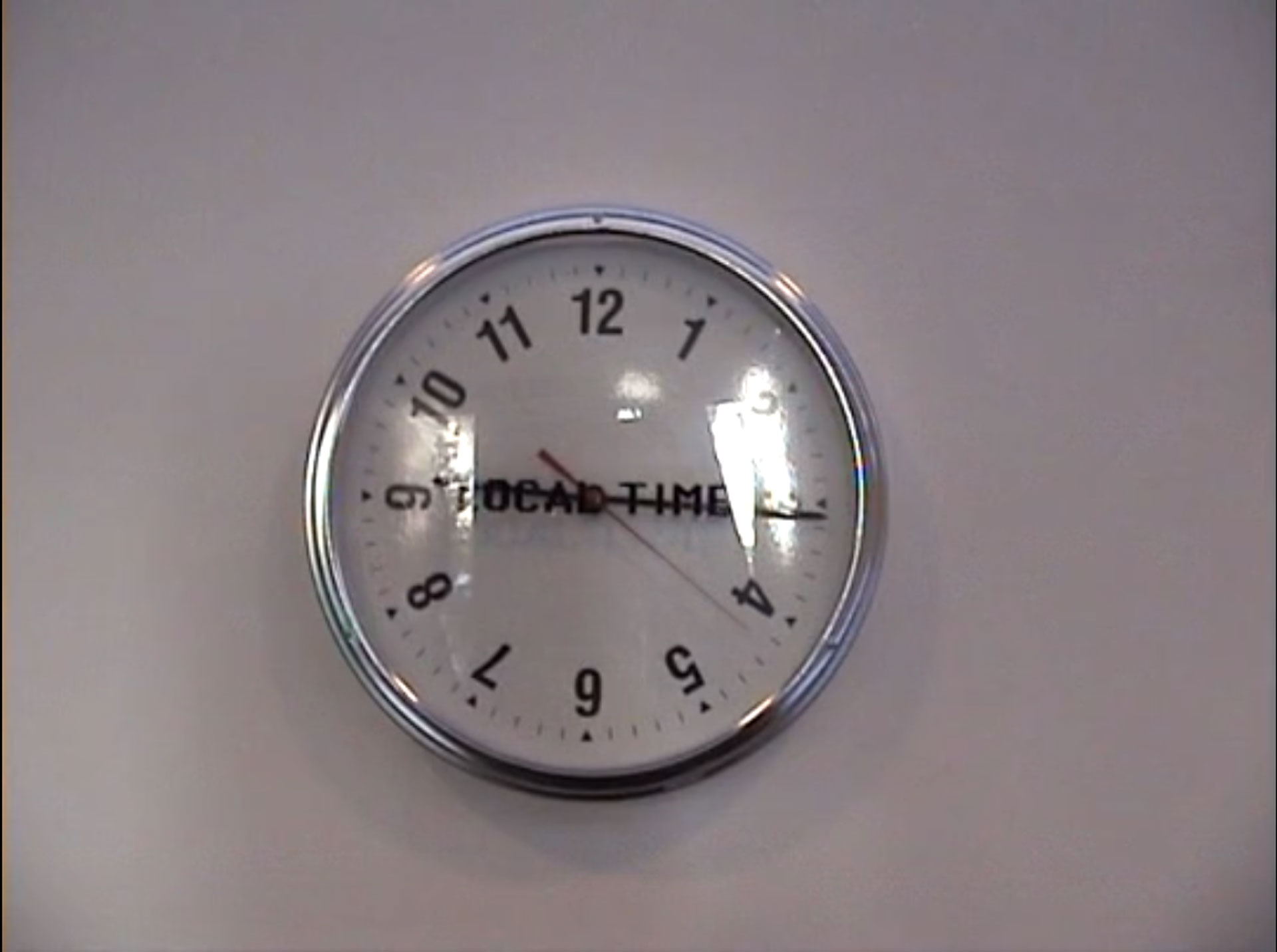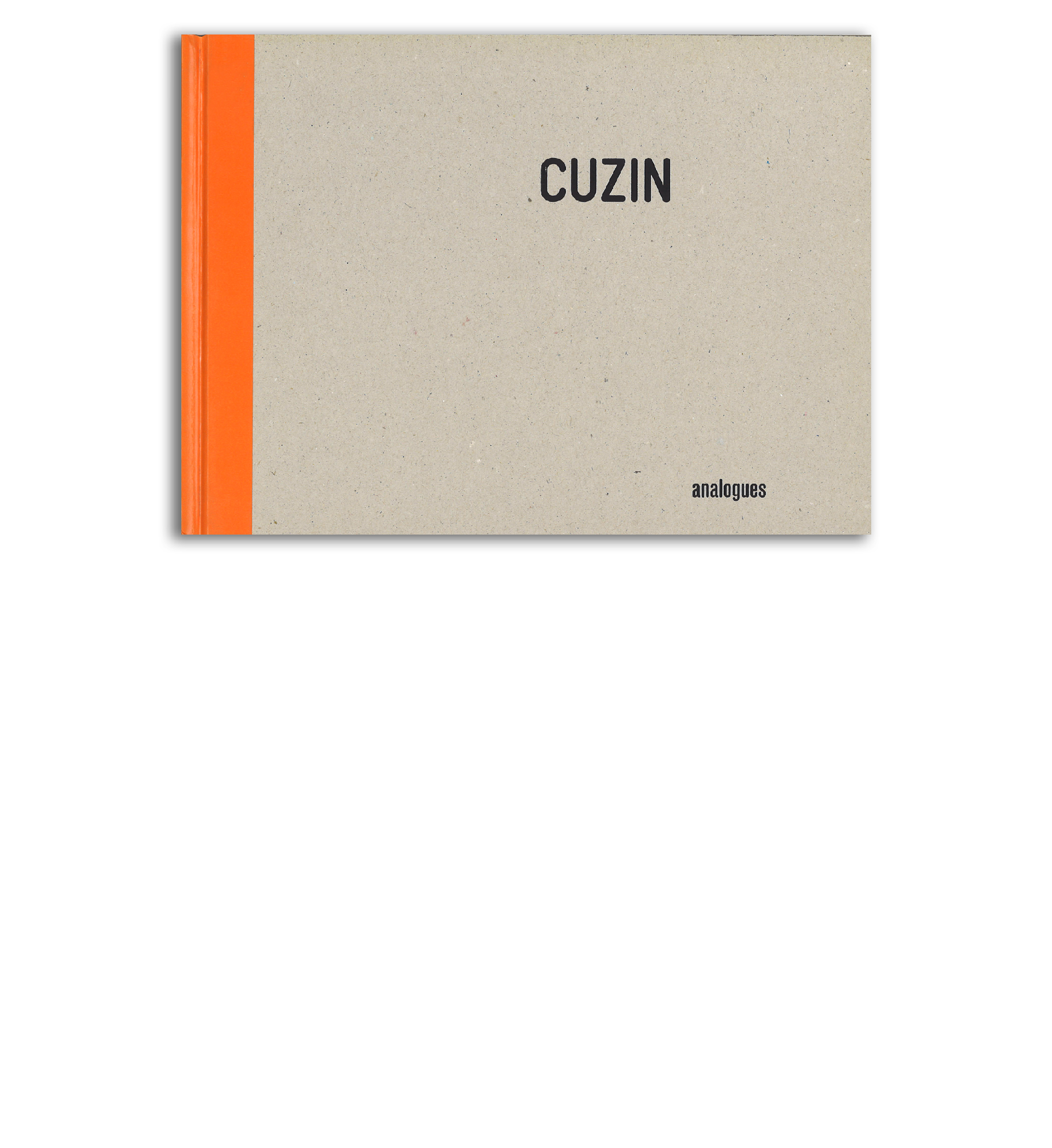Perpendiculaire au sol
Christophe Cuzin

View of the exhibition Perpendiculaire au sol, Centre d’art contemporain d’Ivry - le Crédac, 2004 2001041, 2003, Deux murs © Photo : André Morin / le Crédac

View of the exhibition Perpendiculaire au sol, Centre d’art contemporain d’Ivry - le Crédac, 2004 2001041, 2003, Deux murs © Photo : André Morin / le Crédac

Christophe Cuzin, 2001041, 2003, Dessin préparatoire



Perpendiculaire au sol
Inventory: 180 m of wood pieces…
Because of his background in drawing, painting and building, Christophe Cuzin,with his intervention entitled Perpendiculaire au sol (Perpendicular to the Ground), is looking to concentrate and contextualize a significant amount of information in a “site” that he co-opts to artistic ends, not in an “art object.”
This intervention is at one and the same time a work of art (a single piece), a show (the display of the proposed work in a space that is open to the public), a production (a material realization of the proposal, the means by which it is financed) and a critical reading of the art center (as architectonic sign and social space).Mounting this “hypo-installation” (which is how I qualify it) amounts to placing viewers in a situation where they will experience a certain number of “hypo-spectacular” connections, with a space, with their own bodies and with a certain functionality. Here Cuzin is stressing the points that unite the minimalists, who were behind a renewal of art’s foundations in the 1970s (Donald Judd, Dan Flavin…), with the rules laid down in the 12th century by Bernard of Clairvaux, who, rejecting precious materials and bright colors and advising against figurative representation, longed for an art freed of most of its tangible contingencies. Monochrome painting is the immediate consequence of this hungering after the spare, the pared-down. For ethical and political reasons. A disqualification of the aesthetic.
The white, infinite space of spatial painting is extended to the exhibition space. The things conveyed conceptually and emotionally are thus reinforced. The viewer becomes an element that is hyper-sought-after, hyper-expected. And before the generalized sophistication of goods and knowledge, the sudden immersion in this venue constitutes an artistic undertaking, now more than ever.
Claire Le Restif
Locus Heroe
Christophe Cuzin is a draftsman, painter and builder at one and the same time. His formal interventions employ, concentrate and contextualize “places” and “venues,” not “art objects.”
Locus Heroes sounds like Latin and English, like the title of a pop song or a novel. Yes indeed, as the title suggests, Christophe Cuzin is the hero of the place. His approach is rooted in the work of both Giotto, the Florentine painter and architect (1266-1337), and Sol LeWitt, the minimalist American artist (1928-2007), whom Cuzin worked for as an assistant or, more accurately, as his delegate since LeWitt entrusted others with executing his wall paintings. Cuzin indeed borrows from his predecessors, European and American.
Our first chance to work together came up in 1998, a project undertaken for the Church of St. Martin of Lognes in Seine-et-Marne in response to a public commission for renovating the church’s stained-glass windows. In the end it was all of the interior space that was reworked, a true overall project that involved the stained-glass windows of the nave and the choir, the oculi (or bull’s-eye windows), and the color and decoration of the walls.
As Éric de Chassey has pointed out, “At the same time this intervention took on added importance: it indicated the possibility of rehabilitating those thousands of small nondescript churches that represent the majority of French religious buildings, generally held in disdain by everyone save those who regularly use them and which are all too readily neglected.” Cuzin, the painter well versed in disappearance and ephemeral installations, was striving for a lasting creation in this context. He, the patently modest artist, wanted to fashion a response to the emptiness of time, to eternity.
It was surely no coincidence that Cuzin drew inspiration from the motif of the tree branches surrounding the church to create new bays for the building. The windows appear broken, like a car windshield after being struck, yet rise to the level of a “sacred” work of art. Eternity is relative since it is metaphorically overtaken by a physical reality.
In 2002 I mounted White not!, an attempt to question the “painting” exhibition today which featured work by three artists, Christophe Cuzin, Emmanuelle Villard and David Renaud. For White not!, Cuzin created 1010021 (2002), a pictorial environment that was dictated by the physical characteristics of the venue. It was a site-specific arrangement in the sense that there existed an explicit organic link between the given elements and their location: monochrome canvases done in different colors and stretched over frames were arranged to form a kind of plinth or baseboard around the venue’s walls. Serving as both a frame and pedestal for the show, Cuzin’s piece was intentionally located between the floor, where Renaud’s works were placed, and the classic height at which work is usually hung and at which Villard’s paintings were indeed displayed. It was a position, in the dual physical and ethical sense, that he likes to occupy. His painting was thus discrete and present, simultaneously picture, fresco and furnishing, infused with both a centrifugal force for itself and a centripetal one for the works of art inhabiting the same space. Here Cuzin indeed managed to create a go-between work of art, negotiating between itself (painting), the venue, the subject of the show and the neighboring pieces.
In May 2003, following in the wake of the program Comment s’appelle la partie immergée de l’iceberg? (What Is the Submerged Part of the Iceberg Called?), I brought together the artists Emmanuelle Villard, David Renaud, Véronique Joumard, Hugues Reip and Christophe Cuzin for a show called Slots at the Kunsthalle Palazzo in Liestal (Basel, Switzerland). The venue in this case was a former post office, transformed in the mid-1970s into a dynamic center for contemporary art. Upstairs the site boasted the proportions of an average home (160 m2) arranged around a hallway. There Cuzin mounted Rouge comme rouge (Red Like Red), a piece that combined, as is often the case in Cuzin’s work, a discrete invasion, a whimsical touch and straight out effectiveness. Questioning the connections between painting and the constructed, the passageway was done over in red, from midway on the side walls up to and including the ceiling. By rounding off the walls’ angles here, Cuzin immersed visitors in an atmosphere, a primary, primitive color.
Moreover Slots, after …L’Iceberg?, was the continuation of a (serious) board game. Cuzin was perhaps reacting to Catherine Perret, who wrote in the catalog with respect to White not!, “As the paradoxical motif of an art that is henceforth expelled from nature, the interior sets about explaining how to produce space with nothing… and therefore how to produce space with what remains, i.e., color… Such is Matisse’s message in The Red Studio. Red, the color, is what makes it possible to see things together.” But unlike Matisse, Cuzin doesn’t compose, he negotiates with the venue.
Our fourth encounter took place in January 2004 at Crédac, the Contemporary Art Center of Ivry, for a solo project entitled Perpendiculaire au sol. This intervention was at one and the same time a work of art(a single piece), a show (display of the proposed work in a space that is open to the public), a production (material realization of the proposal, the means by which it is financed) and a critical reading of the art center (as architectonic sign and social space).
Cuzin’s piece was inspired at the outset by a venue with a singular topography, the sloping, geometrically challenged “white cube” of Crédac, located on the foundations of one of the most famous examples of the architecture of Jean Renaudie,in Ivry-sur-Seine (1970-1975). The three galleries making up Ivry’s art center were initially meant to house cinemas. Putting together this “hypo-installation” amounted to placing viewers in a situation where they would experience a certain number of “hypo-spectacular” relationships, i.e., with a space, with their own bodies and with a certain functionality. As his title suggests then, Cuzin’s installation was indeed created with regard to the venue’s characteristics, namely, to render the walls “perpendicular to the ground.”
Because Cuzin’s approach is both formal and spiritual, it blends the legacy of abstraction with the memory of Cistercian art. For Perpendiculaire au sol the artist decided to paint the space white, an infinite space of spatial painting extended to the exhibition space. Because white seems to him certainly more neutral, less filled with emotion, simplified to such a degree, painting exists more than ever.
Perpendiculaire au sol is a kind of hollowing out that nevertheless proves the capacity of paint, even white paint, to create volume. “Simply revealing space is in itself a profound transformation.” Cuzin sets visitors before his raw material, the reality of an architectural space. Perpendiculaire au sol recalls the original experience of paint and painting associated with architecture. That temptation of an overall pictorial space hints at an aspiration to an ideal state of art that is altogether removed from the instantaneous.
Here Cuzin is stressing the points that unite the minimalists, who were behind a renewal of art’s foundations in the 1970s (Donald Judd, Dan Flavin, Sol LeWitt …), with the rules laid down in the 12th century by Bernard of Clairvaux, who, rejecting precious materials and bright colors and advising against figurative representation, longed for an art freed of most of its tangible contingencies. Monochrome painting is the immediate consequence of this longing for the spare, the pared-down.
Reworking Proust slightly, Cuzin writes, “For a long time I used to wake up early”, recalling the Order of Saint Benedict’s encouragement of manual exercise, but he is also describing the paradox he long found himself living in, that of earning his daily bread in the building trades by painting monochromes all day long while carrying on his work as an artist evenings by painting polychromes.
Those wall paintings of his called Bien peint/mal peint (Nicely Painted/Poorly Painted) are indeed references to the work of the artist Robert Filliou, but they also stand as a manifesto that corresponds to definitions that differ according to which of those trades you belong to.
By lending his creations an essentially fleeting, localized nature, Cuzin makes moral decisions. Lean production, zero inventory.
Claire Le Restif
Artist biography
-
Born in 1956. He lives and works in Paris, France.


